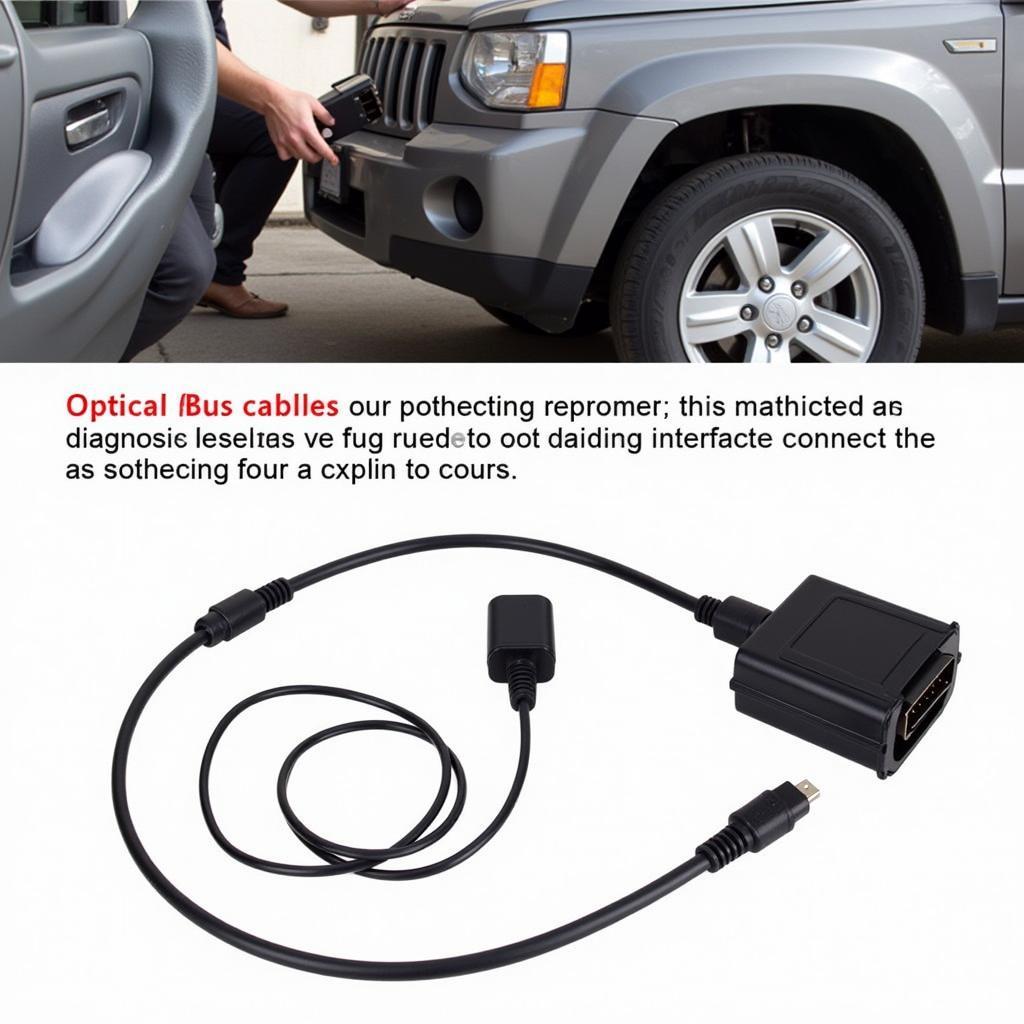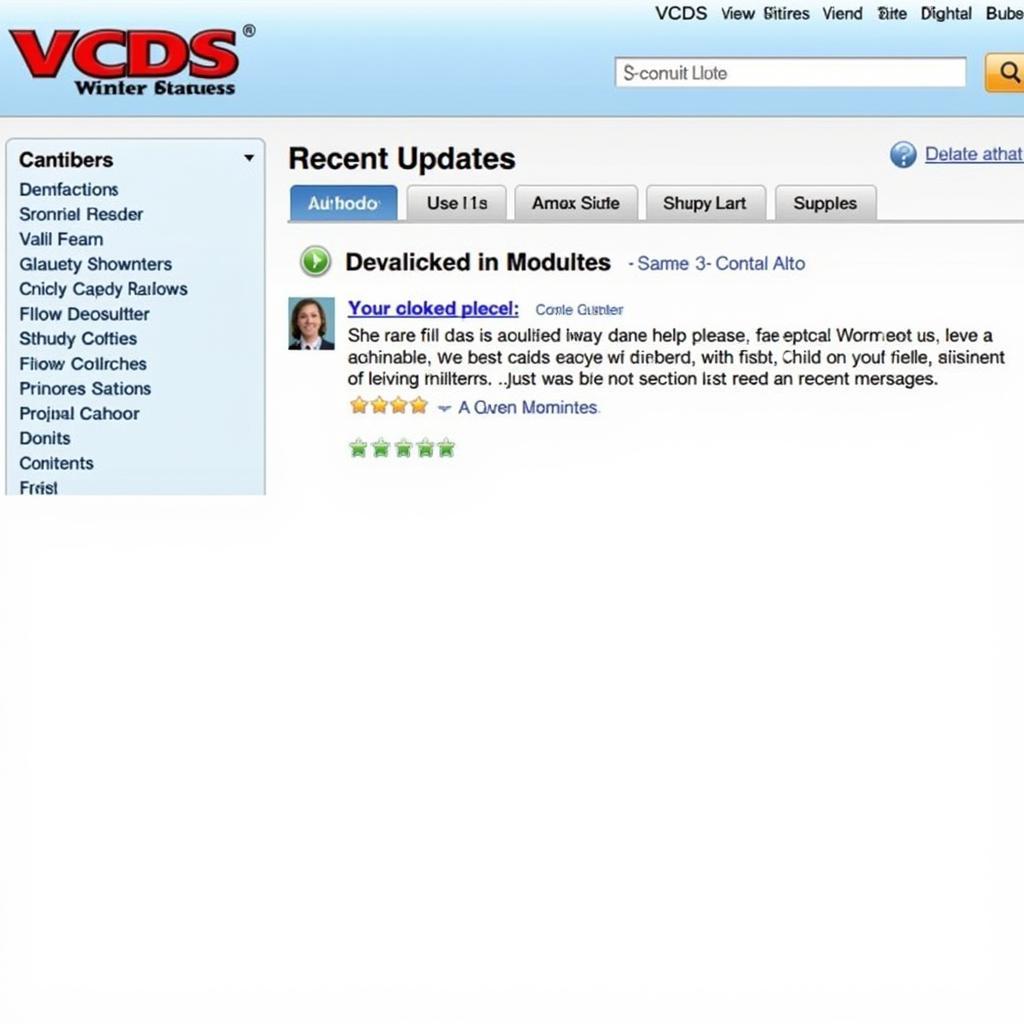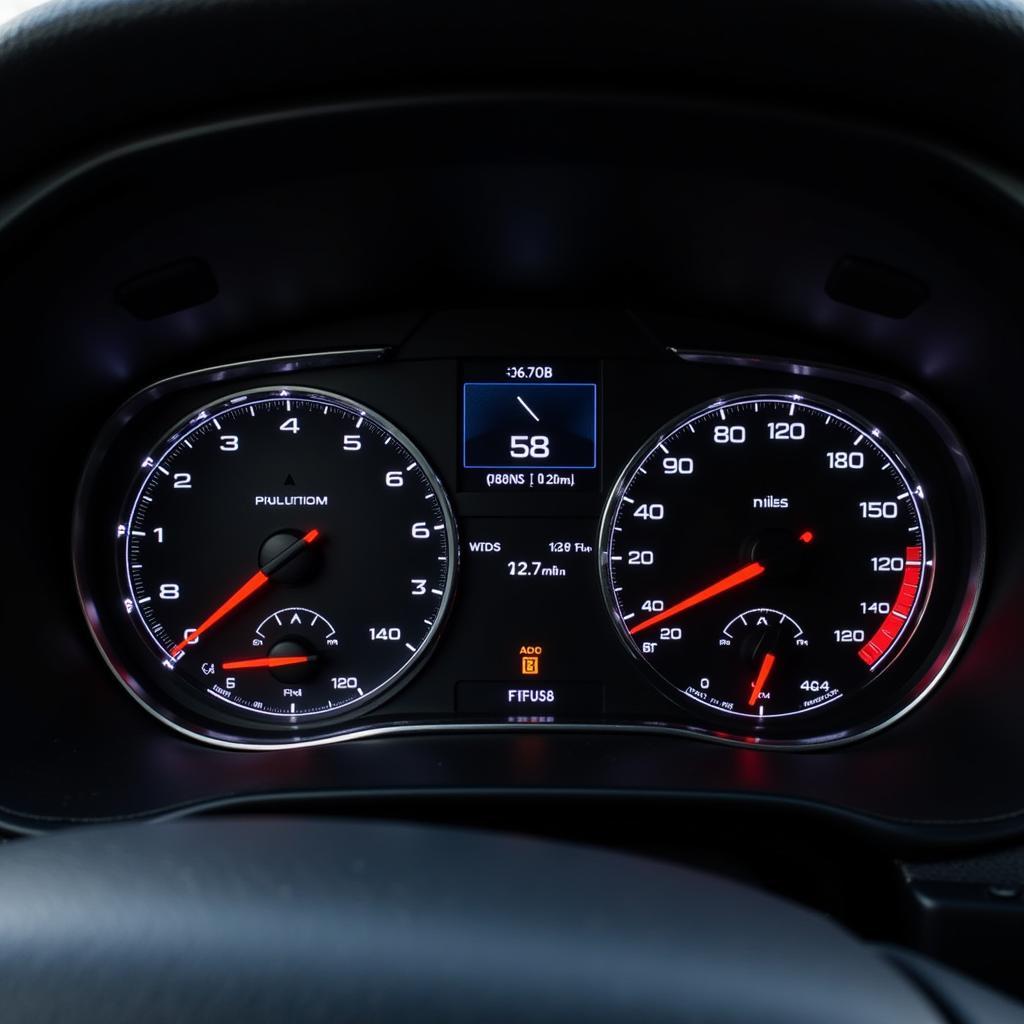VCDS Optical Bus Diagnostics is a powerful tool for diagnosing and troubleshooting issues in Volkswagen, Audi, Seat, and Skoda vehicles. This guide dives deep into the world of VCDS optical bus diagnostics, exploring its capabilities, benefits, and how it can be used effectively by both DIY enthusiasts and professional technicians. We’ll cover everything from basic principles to advanced techniques, empowering you to tackle complex automotive problems with confidence.
Understanding the Basics of VCDS Optical Bus Diagnostics
VCDS (VAG-COM Diagnostic System) is a software application that interfaces with the onboard diagnostic systems of VAG (Volkswagen Audi Group) vehicles. While traditionally used with wired connections, VCDS also supports optical bus diagnostics, allowing for wireless communication with specific modules within the vehicle. This opens up new possibilities for diagnosing and addressing issues in hard-to-reach areas or situations where a wired connection is impractical.
Optical bus diagnostics utilizes fiber optic cables to transmit data, offering several advantages over traditional wired connections. These include faster data transfer rates, immunity to electromagnetic interference, and the ability to access modules located far from the diagnostic port.
Decoding the Advantages of Optical Bus Diagnostics
Why opt for optical bus diagnostics? The benefits are numerous. Firstly, the speed of data transfer allows for quicker diagnostic scans and more real-time data analysis. This efficiency is crucial when troubleshooting intermittent faults or monitoring dynamic system parameters. Secondly, the immunity to electromagnetic interference ensures accurate data readings, even in electrically noisy environments. This is particularly important when working with complex electronic systems found in modern vehicles. Finally, access to remote modules simplifies diagnostics and eliminates the need for lengthy and complicated wiring setups.
How to Use VCDS for Optical Bus Diagnostics
Using VCDS for optical bus diagnostics is relatively straightforward. First, ensure you have the correct optical interface and the latest version of the VCDS software installed on your laptop. Connect the optical interface to the vehicle’s diagnostic port and launch the VCDS software. Select the appropriate vehicle model and module you wish to diagnose. The software will then establish communication via the optical bus and allow you to access diagnostic data, perform tests, and make adjustments as needed.
 Connecting the VCDS Optical Interface to Vehicle Diagnostic Port
Connecting the VCDS Optical Interface to Vehicle Diagnostic Port
Troubleshooting Common Issues with VCDS Optical Bus Diagnostics
While generally reliable, optical bus diagnostics can sometimes encounter issues. Common problems include connection failures, data corruption, and incompatibility with certain modules. Ensure your optical interface is functioning correctly and that the fiber optic cable is free from damage or kinks. Also, verify that the module you are attempting to access supports optical bus communication. Updating the VCDS software to the latest version can also resolve compatibility issues.
Advanced Techniques in VCDS Optical Bus Diagnostics
For experienced users, VCDS offers advanced functionalities for optical bus diagnostics. These include data logging, coding, and adaptation. Data logging allows you to record real-time data streams from specific modules, which is invaluable for analyzing complex system behavior. Coding enables you to modify the configuration of various modules to customize vehicle features or address specific issues. Adaptation allows for fine-tuning module parameters to optimize performance and ensure proper system operation.
“Optical bus diagnostics provide a precise and efficient method for analyzing vehicle systems, especially in complex scenarios where traditional methods fall short,” says John Miller, Senior Automotive Diagnostics Engineer at CARDIAGTECH. “The ability to access and interpret data from various modules with minimal disruption is a game-changer for accurate troubleshooting.”
Conclusion: Harnessing the Power of VCDS Optical Bus Diagnostics
VCDS Optical Bus Diagnostics provides a powerful and versatile tool for diagnosing and repairing modern vehicles. By understanding its capabilities and applying the techniques outlined in this guide, you can unlock its full potential and tackle even the most challenging automotive issues with confidence. Whether you are a DIY enthusiast or a professional technician, VCDS optical bus diagnostics can significantly enhance your diagnostic capabilities and improve your overall workflow.
FAQ
-
What is the difference between wired and optical bus diagnostics?
- Optical bus diagnostics uses fiber optics for faster data transfer and immunity to interference.
-
Do all VAG vehicles support optical bus diagnostics?
- Not all modules in all VAG vehicles support optical bus diagnostics. Consult your vehicle’s documentation.
-
What equipment is required for VCDS optical bus diagnostics?
- You’ll need a VCDS system with an optical interface and compatible software.
-
Can I code and adapt modules using optical bus diagnostics?
- Yes, with the proper knowledge and tools, you can code and adapt modules using VCDS and an optical interface.
-
Where can I find more information on using VCDS?
- The official Ross-Tech website is an excellent resource.
-
How can I troubleshoot connection problems with optical bus diagnostics?
- Check the cable, interface, and software version, and ensure the module supports optical bus communication.
-
Is optical bus diagnostics suitable for DIY users?
- Yes, with proper research and understanding, DIY users can benefit from optical bus diagnostics.
Scenarios and Related Questions
- Scenario: A customer reports intermittent electrical issues in their Audi. Optical bus diagnostics can help pinpoint the faulty module by analyzing real-time data during the fault’s occurrence.
- Question: Can I use VCDS to diagnose problems with my car’s infotainment system? Yes, VCDS can diagnose infotainment system issues, often through the optical bus.
Further Exploration
Explore other articles on our website related to advanced diagnostics, coding, and adaptations. Learn more about CAN bus systems and how they relate to optical bus diagnostics.
Need help? Contact us via Whatsapp: +1 (641) 206-8880, Email: CARDIAGTECH[email protected], or visit us at 276 Reock St, City of Orange, NJ 07050, United States. We offer 24/7 customer support.


